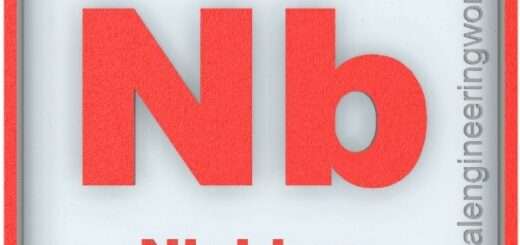Zinc Element Properties and Information

Zinc Element Properties and Information
Zinc is the thirtieth element on the periodic table. Elements are arranged in the periodic table on the basis of the atomic number. Atomic number is the number of protons in the nucleus of the atom. Zinc has an atomic number of 30. It is located in the Group 12 and Period 4 of the periodic table of elements. It is denoted by Zn. The name is derived from the German word ‘Zinke’ which means Prong Tooth.
Zinc is one of the elements which have been used by humanity since historic times. Zinc was identified as a metal in its own right in India and it was refined on a large scale in a smelter located at Zawar in Rajasthan. That smelter was used between the periods of 1100 to 1500. The zinc refining was also carried out in China on a large scale in 1500s.
Zinc is found in several ores but the most important ores of zinc are zinc blende and calamine. Zinc blende is calamine and calamine is zinc silicate.
Physical Properties
- Zinc is a silvery-white metal with a blue tinge.
- The atomic mass of zinc is 65.37
- The melting point of zinc is 420°C
- The boiling point of zinc is 907°C
- The density of zinc is 7110 in S.I. units at 20°C
- Zinc is hard and brittle near ambient room temperatures.
- Zinc becomes malleable when heated between 100-150°C. It becomes brittle again if it reaches a temperature of 210°C.
- A bar of zinc generates characteristic sound when bent.
- Five stable isotopes of zinc occur in nature; zinc-64, zinc-66, zinc-67, zinc-68, zinc-70. Zin-64 is the most abundant among the lot amounting to 49.17% of the total zinc.
Chemical Properties
- An oxide layer forms on zinc, if it is exposed to air.
- Zinc is a moderately reactive metal but it is a strong reducing agent.
- Zinc burns in air with bright bluish-green flames.
- Zinc(I) compounds are rare and require bulky ligands to stabilise the low oxidation state.
- Most of the compounds are zinc(II) type. Zinc is known to form compounds with most of the metalloids and non-metals also.
Methods of Production
- Extractive metallurgy: The ore is finely grounded and then put through froth flotation process in order to concentrate the amount of zinc in the ore. Zinc is concentrated up to atleast 50%. Roasting is then done to concentrate the zinc sulphides to zinc oxide. For further purification pyrometallurgy and electrowinning are used.
- Pyrometallurgy: The zinc oxide obtained from extractive metallurgy is reduced using carbon and carbon monoxide at 950°C. It is distilled to separate zinc vapours from other vapours.
- Electrowinning: The zinc is reduced from the ore using sulphuric acid and then it is reduced using electrolysis. The sulphuric acid is regenerated and recycled to the leaching step.
Relevance in Chemical and Related Industries
- Galvanisation: More than half of the iron produced commercially is used for the galvanising, that is, coating of iron or steel. Zinc is more reactive than iron or steel and it will attract almost all of the local oxidation until the layer of zinc gets completely corroded.
- Alloys: The most common zinc alloy is called brass, it is made by combining zinc and copper. Brass contains 3-45% of zinc. Brass is more ductile and corrosion resistant than copper. Other common types of zinc alloys include; aluminium, nickel, and copper.
- Catalyst: Zinc oxide is used as a catalyst in the manufacture of rubber to disperse heat. It also protects rubber polymers from ultraviolet radiation.
Relevance in Other Industries
Model rockets: Zinc powder is used as a propellant in model rockets. Zinc and sulphur in the ratio of 70:30 are compressed and ignited to produce vast quantities of hot gases, heat, light, and zinc sulphide.
Health Effects on Exposure
- Zinc deficiency: Too little quantity of zinc in the body causes loss of appetite, slow wound healing, and skin sores.
- Zinc overdose: Too much quantity of zinc causes stomach cramps, skin irritation, vomiting, nausea, and anaemia. The unborn baby can also get affected if the mother has a high presence of zinc in her body.
- Metal Fever: Metal fever is a flu-like condition which occurs if one works in a zinc-centered work place.
Effects on Surroundings
- Plants: Large quantities of zinc in soil is quite damaging to survival of plants. Not many plants grow on a zinc rich soil.
- Fishes: Zinc is quite common in industrial waste waters. On dumping the waters in sea, fishes near the waste can accumulate zinc in their bodies in large quantities. Zinc is a danger because it bio-magnifies along the food chain. In this way it may even reach to humans.
- Animals: Animals who eat plants growing on zinc rich soils are in dangers of over accumulating zinc in their bodies which leads to health problems.
References:
https://www.rsc.org/periodic-table/element/30/zinc
































